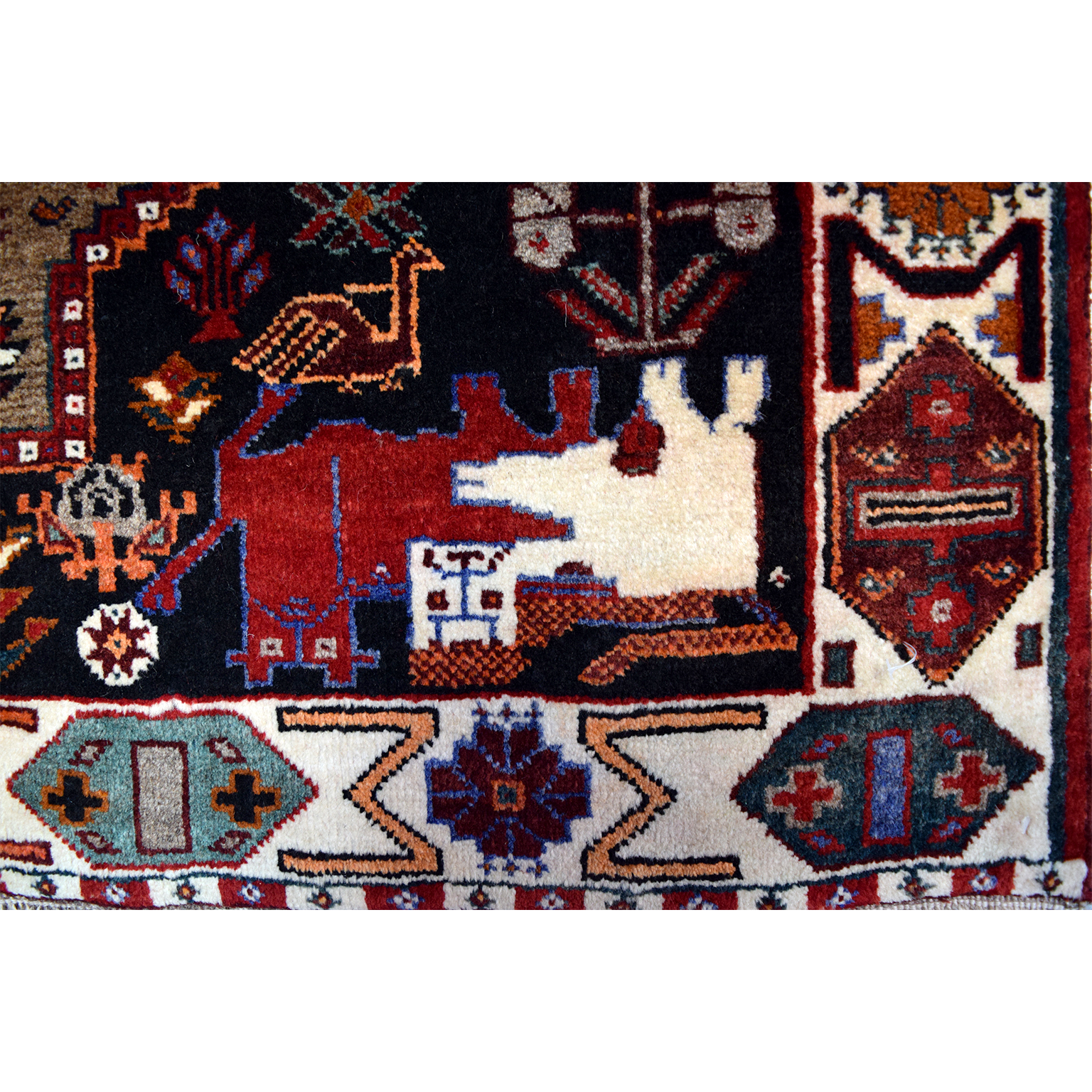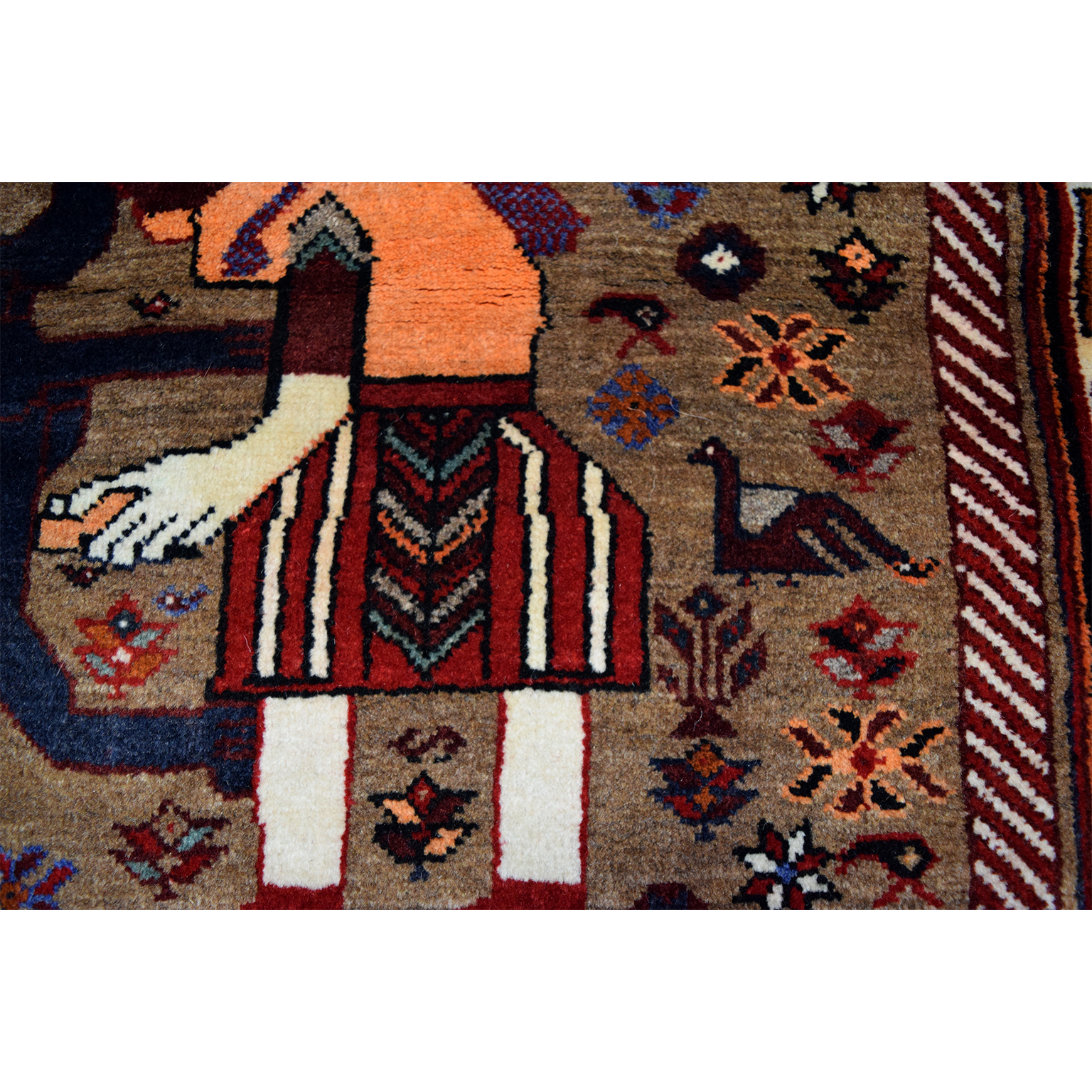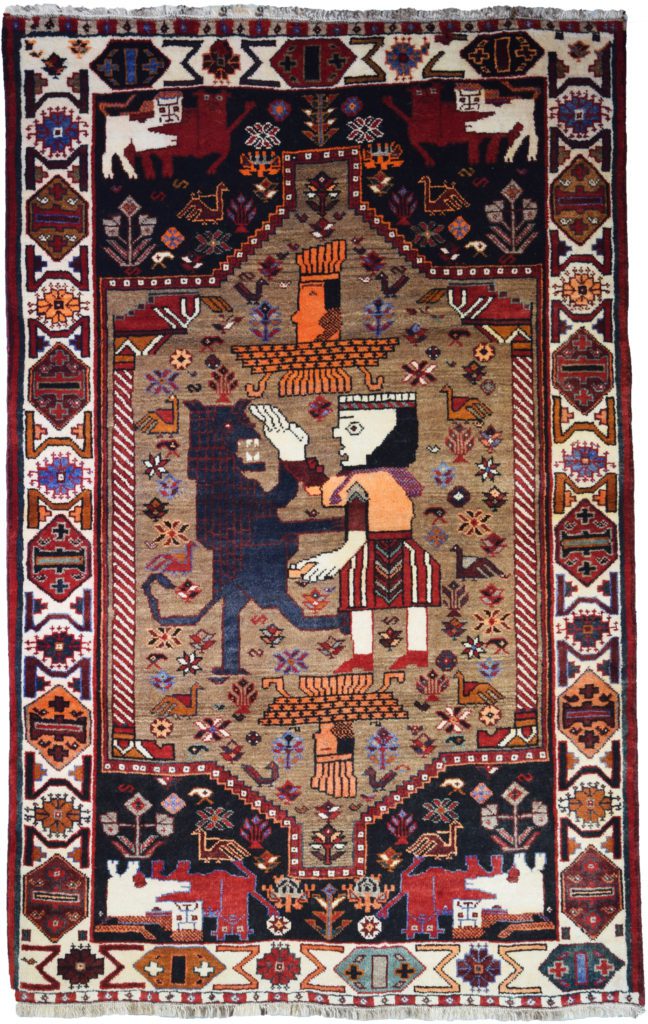Antique Spotlight – Qashqai Persian Carpet Featuring King Bahram and the Lion
Storytelling has long been a sacred pastime, passed down from generation to generation. Within Persian culture, storytelling is common amongst textiles, especially within Persian carpets. In this week’s Antique Spotlight, read to uncover more about this particular Qashqai carpet’s construction and the importance of its design regarding the story of King Bahram and the Lion.
Measuring 3’6″ x 5’5″, this distinct Qashqai carpet circa 1940, detailed in orange, black, red, cream, indigo, and neutral brown wool, features a hand-knotted pile crafted using traditional Persian weaving techniques. Wool shorn from Persian fat-tailed sheep is hand-spun by the weavers, creating the fabulous striations seen throughout the design while simultaneously protecting the natural lanolin in the wool. Next, this wool must be dyed using traditional organic vegetable dyes. These dyes, still preferred today, are selected for their bright and fade-resistant tones. After the dying process, the yarn must be washed and baked in the sun to remove the excess dyes in the wool and set the patina. Once prepared, the weavers then begin the time and care-intensive process of hand-knotting each thread of yarn onto the warp and weft foundation.
As critical as such details are to a carpet’s construction and longevity, what is most intriguing about this piece is its intricate and mesmerizing design. Detailed motifs, including birds, flowers, and boteh designs, among others, gently rest atop the neutral brown and black wool background. Vibrant hues balance the neutral background tones of the field and border, with golds, reds, and blues distributed among shades of cream and camel. The central motifs depict the story of King Bahram and the Lion from Ferdowsi’s Shahnameh. Here the lion represents the inner evils and weaknesses of the human ego, which Bahram must defeat to become King of Persia. Aligned above and below the human and lion motif, the gold motifs are the Zoroastrian symbol of Faravahar, the angel of goodness. In each of the four corners are the figures of the lion and the horse. The lion represents the king, and the horse represents the people, thus symbolizing the two entities must be in harmony for the kingdom to prosper. Lines of four throughout the border represent the four elements of earth, wind, fire, and water, while peacocks in the field symbolize royalty, and flowers throughout the design symbolize purity. Through imagery, the weaver thus conveys the story of King Bahram and the many themes and elements embodied within it.


If this vintage Qashqai carpet catches your eye, we invite you to visit one of our showrooms either in-person or virtually! With hundreds of small to medium-sized antique rugs, the only way to find your favorite is to see them for yourself. Check out orleyshabahang.com to see our vintage and Antique gallery, or if you are feeling adventurous, check out our digital 1stdibs showroom to see the rest of our antique carpets.


